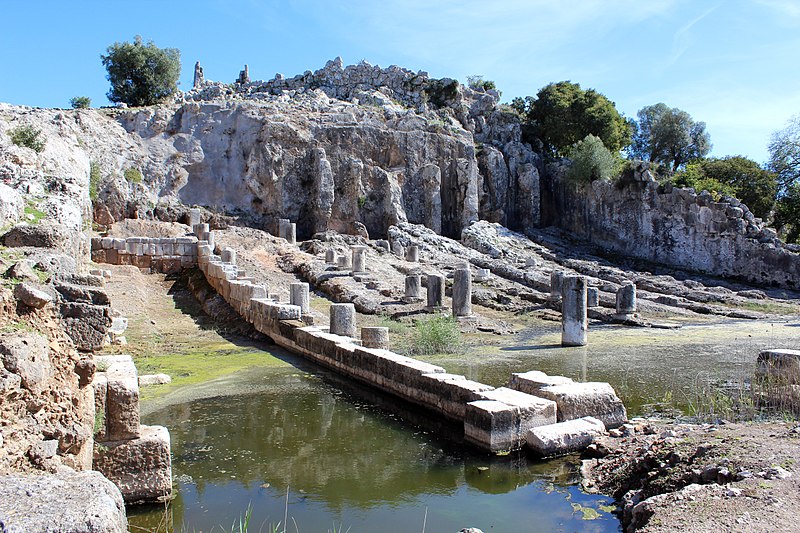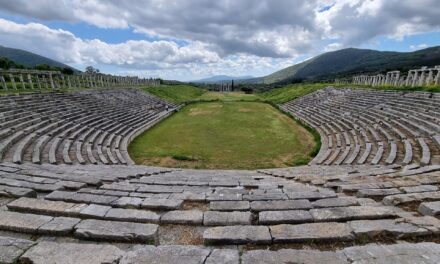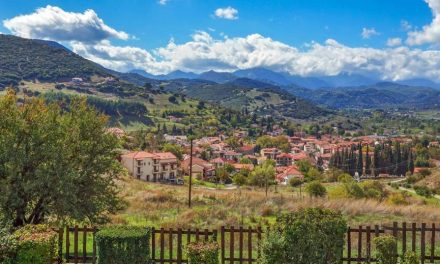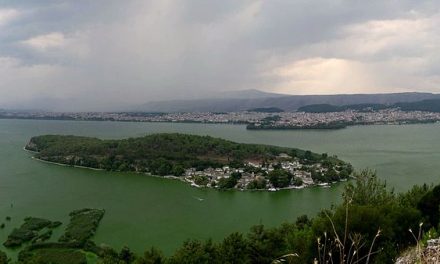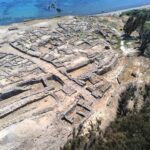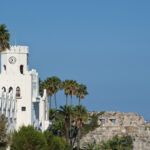The site of the ancient city of Oeniadae, in the regional unit of Aetolia-Acarnania in Greece, boasts one of the best preserved shipyards of the antiquity. An important city in the antiquity, Oeniadae used to have three ports, strong fortifications and a large theatre. Its well-preserved ruins make it a monument of great interest to this day.
Ancient Oeniadae
Oeniadae was an ancient city of southern Acarnania on the northern bank of the Achelous River; the river, stretching from Aeolia (modern Thessaly) to the Ionian Sea, forms a natural boundary between what used to be the ancient regions of Acarnania and Aetolia. Oeniadae was Acarnania’s second most important city after Stratos. Its position allowed it to control the entrance to the Gulf of Patras; surrounded by marshes, it was naturally barricaded, while strong additional fortifications were built to protect it. Its position was also favourable for the development of commercial activities, as well as for shipbuilding.
Its name appears linked to the mythical Oeneus, king of Calydon; according to the myth, its founder was the Argive leader Alcmaeon, who fled there pursued by the Furies for having committed matricide. Many historians place its founding in the sixth century BC, as a Corinthian colony. While in the early years of the Peloponnesian War the city was hostile to Athens, in 424 BC it joined the Athenian Alliance and served as a base for the Athenian warships.
It continued to be a place of importance during the Macedonian and Roman wars. In the time of Alexander the Great, the Aetolians, who had extended their dominions on the west bank of the Achelous, obtained possession of Oeniadae and expelled its inhabitants. The citry remained in their hands until 219 BC, when it was taken by Philip V of Macedonia who strongly fortified the citadel, and commenced uniting the harbour and the arsenal with the citadel by means of walls. In 211 BC it was taken by the Romans under Marcus Valerius Laevinus, and given to the Aetolians, who were then their allies; in 189 BCE it was finally restored to the Acarnanians by virtue of one of the conditions of the peace made between the Romans and Aetolians in that year. Thereafter, progressive silting of its harbours diminished the city’s usefulness.
The remains of the ancient city are located on a flat-topped hill, over the surrounding alluvial plain, which used to be a marshland in the ancient times. Since the medieval times, the site’s name has been Trikardo or Trikardokastro. The walls of the ancient city, built along the brow of the hill in a polygonal style, are still well preserved, while the port and shipyards are protected by separate fortifications. Inside the central fortification we find public buildings, forming part of the Agora, as well as private buildings, a small temple close to the port and a bath complex. No signs of medieval occupation of the site exist. The modern-day municipal unit Oiniades, of the Missolonghi municipality, was named after the ancient town of Oeniadae.
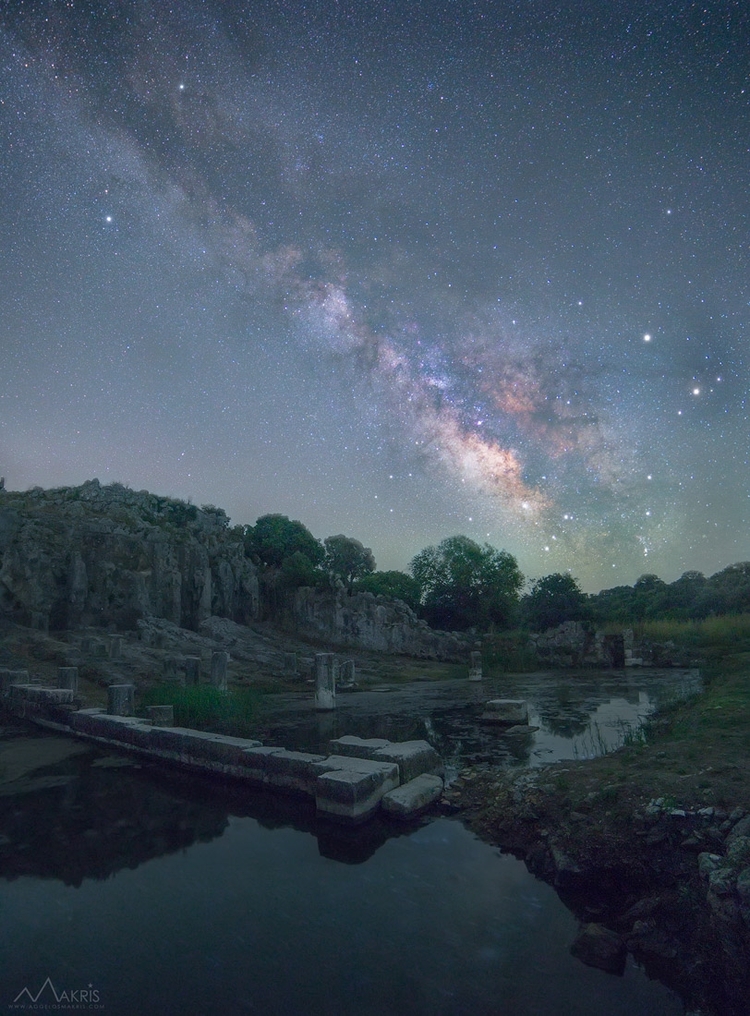 Oeniadae shipyard at night (Image by Aggelos Makris via Wikimedia commons)
Oeniadae shipyard at night (Image by Aggelos Makris via Wikimedia commons)
Ports and shipyards
Oinades had three different ports. The fortified port, which also featured a shipyard and shipsheds, is one of the best preserved from the antiquity. It was used for hauling and repairing ships and storing them in the winter months. It was a roofed structure, with its floor carved into the rock, divided by five colonnades. This served as a tow ramp. The site was in full operation until the 3rd century BC when the roof receded and the colonnades collapsed.
The city’s largest harbour, used for commerce, was on the southwest side of the hill, near the large central gate of the city, with easier access to Achelous River, while a third smaller port also used to exist.
Ancient Theatre
The site of Oinades also features a theatre, which was built close to the Agora, with with great acoustics and panoramic views of the Achelous River and the coastal lowlands. The theatre was constructed in two separate phases: it was built when the Athenians occupied the city, in the 4th century BC, with a one-storey stage and a particularly large orchestra. In the 3rd century, reconstruction operations were carried out, possibly by the Macedonian king Philip V. Among other alterations, a foreground was added, as well as an additional storey for the stage. Its capacity reached 4,600 spectators. The theater is open to the public, and concerts and plays are held every summer as part of the Oeniades Festival, held by the Missolonghi municipality.
Read also via Greek News Agenda: The unknown Mycenaean acropolis of Glas; Minos Kalokairinos: the man who discovered Knossos; Archaeology in Crete: Lectures at the Museum of Cycladic Art
N.M. (Intro image: Oeniadae shipyard via Wikimedia commons)
TAGS: ARCHEOLOGY | HISTORY

